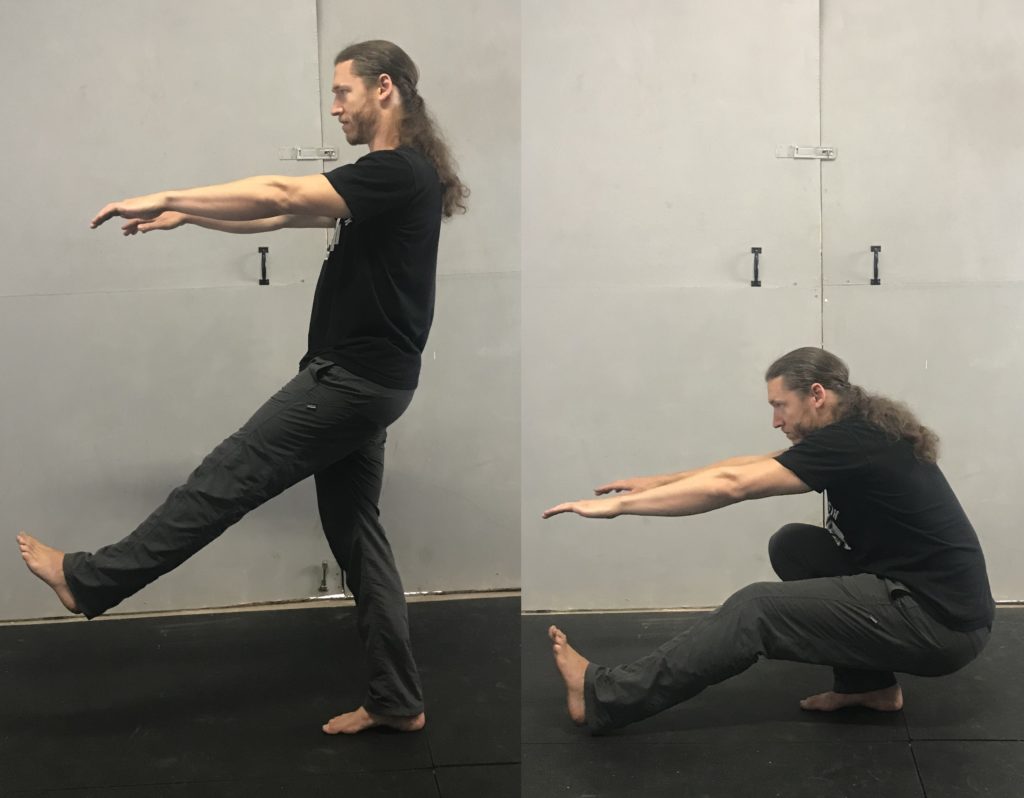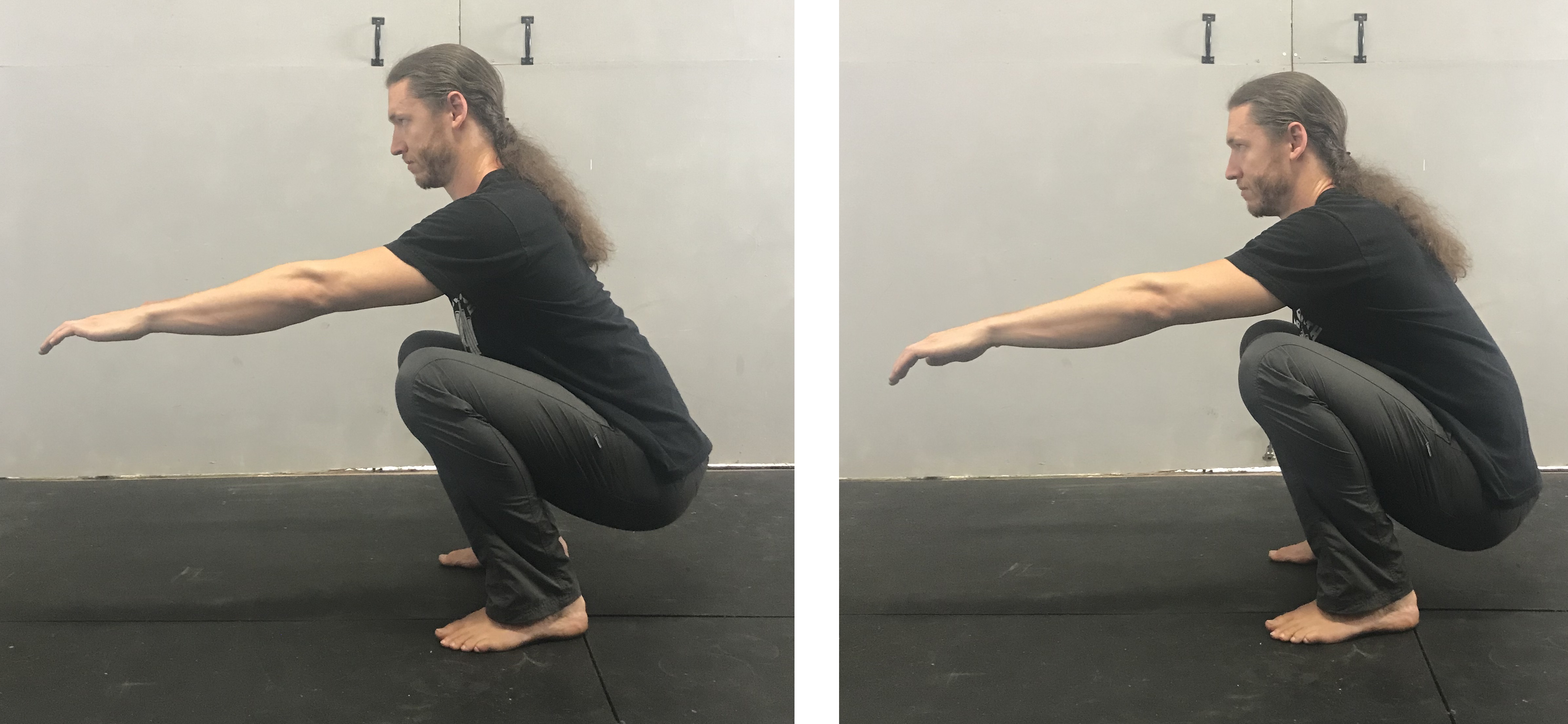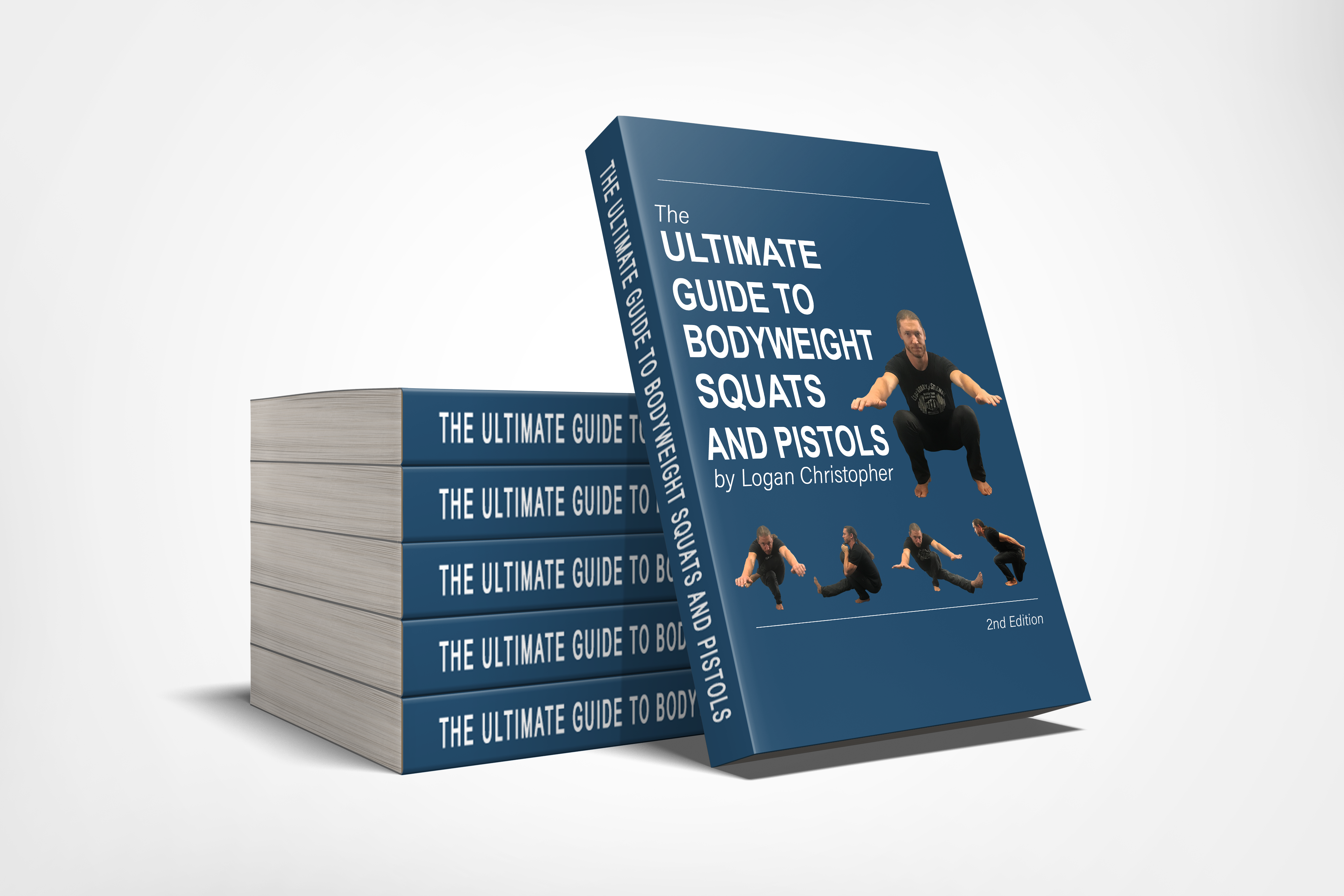A subscriber sent me this article by Dr. Joel Seedman, Ph.D. talking about how pistol squats are bad for you, and asked my thoughts on it.
It’s fairly long, but if you want to read it for yourself you can find it here.

If you don’t want to read it, or just as a quick recap anywhere, here is what Dr. Seedman is saying.
He doesn’t like pistol squats because they “emphasize contortionist mechanics for the lower body that can lead to injury and inflammation.” That they further impact mobility in a negative way. That the potential drawbacks outweigh any benefits that they bring.
A better option is skater squats (also known as airborne lunges) where no more than a 90-degree joint angle in the knee is used.
Do I agree with this? While there are a couple of points in the article I do agree with, there are many that I don’t. I’ll be taking a few more quotes and my comments regarding them below.
Pistol Squats and Rock Bottom Squats Break Down the Body?
Dr. Seedman stats that pistols “oftentimes degrade mobility due to inflammation and aggravation of joints/connective tissue produced by excessive range of motion and hanging out on the tendons and ligaments.” Furthermore, “Performing too many of these odd positions such as pistol squats, ATG squats, or deep Cossack squats during training breaks the body down and makes it more vulnerable and prone to injury, not to mention it provides less of a strength and muscle hypertrophy stimulus.”
This is something I disagree with big time. You see he puts pistols in the same category of ATG squats (which stands for ass to grass, though I tend to use the term rock bottom more). And his statement is that doing this is bad for you. He likens this to contortion. While flexibility is involved, it is far from contortion in my mind.
A rock bottom squat is not an excessive range of motion. In fact, I would say it is a normal human range of motion, that if you cannot do it, then you’re setting yourself up for problems down the road.
I like to look at non-Westernized people, like indigenous populations. They often rest in a full squat position. And that’s really what it should be, a resting position. Ideally, it shouldn’t be hard work to get into and stay in it.
And the fact is, if that it true, it’s really not that much more difficult to do a pistol squat bottom position.
I don’t mean to say that pistol squats are right for everyone. Certainly, some may find it just doesn’t agree with their body. That’s fine, as I always say you should listen to your body. But to say that something a little bit beyond a normal range of human movement is going to cause inflammation and degrade mobility is pushing this idea too far. Why I disagree is fleshed out a bit more after the next quote.
Tendons and Ligaments are Tissues worth Training Too!
Dr. Seedman also says, “Pistol squats are not very effective for building functional strength or size in the lower body. That’s because you’re essentially collapsing during the bottom half of the movement and hanging out on your tendons, ligaments, and connective tissue rather than keeping your muscles tight and activated.”
Ideally, you should be able to rest in the bottom position of a two legged squat. You can call that “collapsing” but I call that resting. And it’s the same thing in a pistol squat too.
The question is do you always want to keep you muscles tight and activated? No you don’t. There are other tissues in the body beyond muscle that are worth training. That force gets thrown onto tendons, ligaments and joints is not necessarily a bad thing. Modern fitness lives in the “cult of muscle,” but great gains are to be had in focusing on other tissues.
Furthermore, just because you can relax in the bottom of a pistol, doesn’t mean you have to. If you want the muscles can be fully engaged throughout.
I do partially agree with the first part. While pistol squats can be used for strength or size, they are not the best way to get either of those things. I concede that there are superior exercises, event he skater squat or airborne lunge as mentioned, as well as normal weighted back and front squats too.

Are Pistols Good for Sport and Life?
Another quote: “However when it comes to functional movement they’re on the opposite end of the spectrum as they have little if any carryover to sports or everyday life unless you’re a professional body contortionist.”
While I don’t agree much with the contortionist statement, the rest of this is pretty sound. In very few sports are you operating out of a rock bottom squat position, let alone on one leg.
(To give a contrasting viewpoint, in most sports you’re not lying on your back but that hasn’t stopped the bench press from becoming one of the most popular exercises ever. Besides lineman in football I don’t see many other sports where that has much carryover either.)
Back to my earlier point about rock bottom squats in general, yes that applies big time in my everyday life. I play with my daughter a whole bunch like that. I forage for food and herbs using a squat. I take breaks from standing with squats. I use that position while going to the bathroom (with the help of a Squatty Potty.) So once again, a little more strength and flexibility in that position and I would say that it does have carry over in a big way.
Just cause most people don’t do it, doesn’t mean it’s not ideal. Once again, look at any group of people that don’t sit all day and you’ll see they use the squat a lot!
Another statement: “Programming pistol squats for your athletes is a surefire way to ruin their body mechanics, stability, force absorption, speed, jumping technique, agility, and motor control.”
Pistol squats are not the end-all, be-all exercise. I do not think that people should only do pistol squats, at least not for a long time. But, again, I think this is a bit of a stretch. To say that doing one movement will ruin you for other movements is taking things too far.
What to do with the Free Leg
Dr. Seedman also quotes Mike Boyle as saying, “Because of the position of the non-squatting leg, pistol squats can often cause low back pain due to overuse of the hip flexors. Holding the free leg extended and parallel to the floor can cause significant low back stress and subsequent low back pain, particularly in athletes or clients with longer legs. In addition, there is no added benefit provided to the working leg from holding the non-working leg parallel to the floor.”

Again, the move may not be right for everyone. If it hurts your low back don’t do it, or at least ease off, until you can do it pain free for sure.
And I do agree with artificially keeping the non-working leg too high doesn’t serve much benefit. I also never strive for a truly parallel position to the floor, instead keeping this free leg as relaxed as possible, while still being kept off the ground. Perhaps that’s why I seem to be having better results than the people brought up in this article.
There are also some other ways around this like with elevated pistol squats where there is more room for the free leg to hang. This is also a good exercise for bigger guys where their mass gets in their own way. In fact, the mighty Paul Anderson liked doing this move.
To Sum Up:
1. Rock bottom squats are a natural human movement that if you don’t have, you’ll pay a price for later. Best to regain this ability and learn to relax in it…and then actually use it in your everyday life.
2. A pistol squat is only a slight extension in strength and flexibility from the rock bottom squat, thus is also a good test of strength, coordination, flexibility and mobility worth shooting for.
3. Aiming to put force on your tendons, ligaments and joints can be a good thing when done smartly.
4. While the pistol is a good exercise worthy of attainment, if your goal is strength or muscle there are better options. The pistol should not be done to the exclusion on other forms of bodyweight training, but that doesn’t mean it’s not worth doing.
5. While Dr. Seedman may say I’ll be paying the price later done the road, I’ve been doing lots of pistols, weighted and otherwise, as well as other one-legged squats which demand even more flexibility lately. And you know what? I can’t remember the last time I had an ankle, knee, hip or back issue. Smart training in acquire more movements, not less, can be a good way to get and stay pain-free.



Comments
Great article, as usual. As for my own personal opinion, I’ve found doctors to be the worst resource for good health. Remember when they claimed running was bad for you because we only have so many heart beats in our life? Or how it damaged women’s ovaries? And how weights were bad for children because it would stunt their growth? Or how they used to endorse cigarettes? And let’s not even get started on foods. I find pistol squats to be great, even though I am not that great with them. Thanks for your thoughts on this subject.
Who the heck is his model for making such ridiculous statements? “Emphasize contortionist mechanics”? No, not when done right, with practiced progressive strengthening. “Excessive range of motion and hanging out on the tendons and ligaments”? Again, no control on the part of whomever is modeling pistols for him – and You are so right about how the ATG squats should be normal range of motion. What’s his definition of “too many”? Doing “too many” of anything is just plain bad because it’s TOO many. I mean, the language… ugh. Why would he consider hypertrophy to be so darn important to people? So there’s people who do want bigger muscles, and there’s people who just want to be a lot stronger. No separation for the goals of the person performing the pistols? I mean, look at you? Who in their right mind would think someone as not-hypertrophied-to-hell as you are could possible possess the amount of pure strength you do? Nobody trained in any colleges or universities now days. Those institutions still don’t give enough credit to neural control and degree of being able to tense muscles. The training they get is pretty much funded by … well, lets just say folks who would rather the general population stay weak, meek and obedient. I agree with Jim, too, about how doctors being the worst resources for health advice. Ever read the intro to “How not to Die” by Michael Greger, MD? Just read the first page and the next couple of paragraphs. Not that I recommend the book, I don’t and will never agree that being vegan is good for anything beyond the first 2-3 weeks for the cleansing effect. Anyway, I’m glad you took some time to counter his ignorance. And you ought to see my daughter play football. She can knock out perfect pistol squats without relaxing for an instant until top position. Pistols are her main source of leg strength. It’s all about goals, the reason for doing something. Then you can get down to the hows. Eh?
Sorry but the doctor is correct. This exercise caused hip bursitis. I think the old adage of listening to your body is best. It causes pain around the hip joint area whilst doing it. I can perform any other leg exercise without problem. I think based on my experience that split squats or lunges are a better option without causing injury.
This may be the case for you. But if I listen to my body and have no problems with this exercise then is that not also correct?